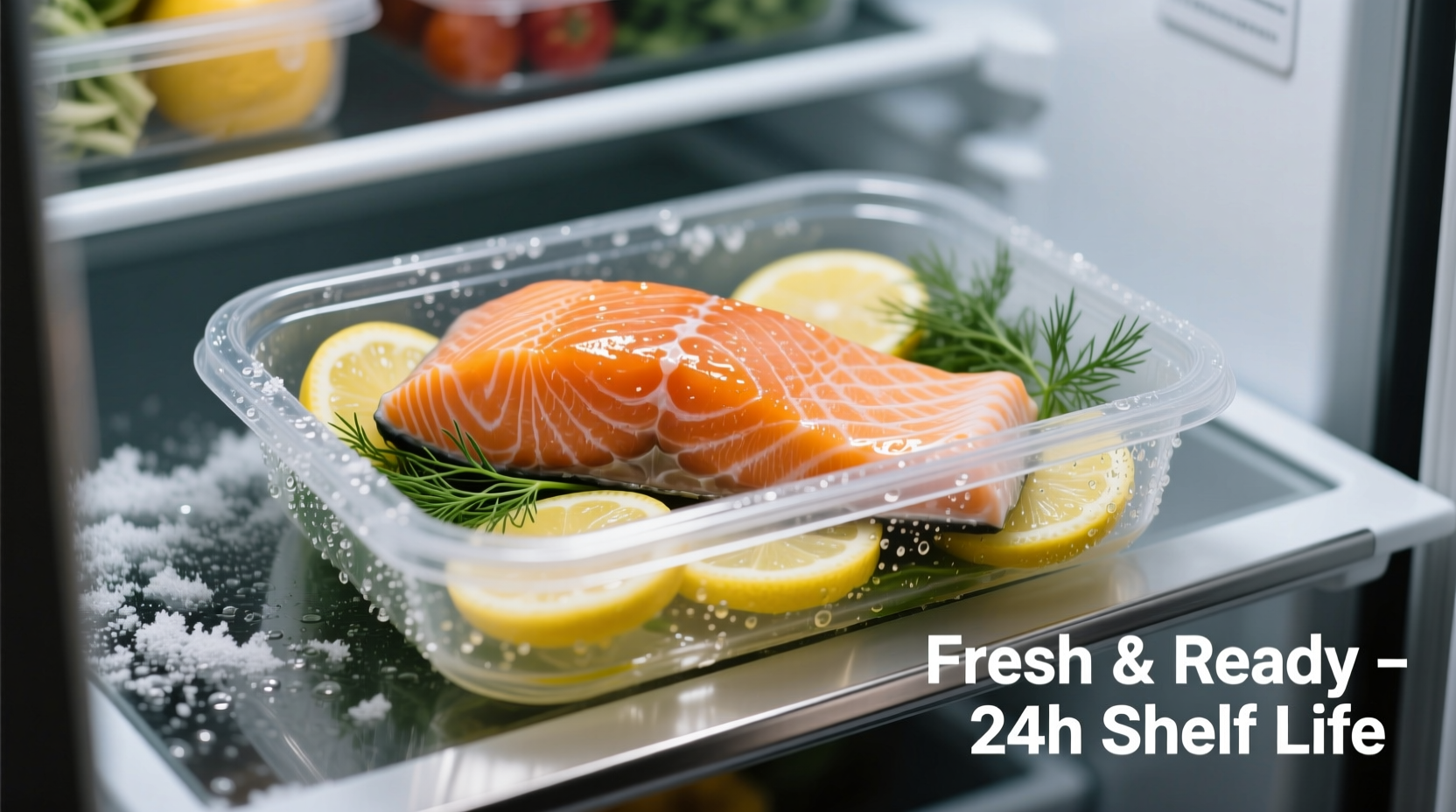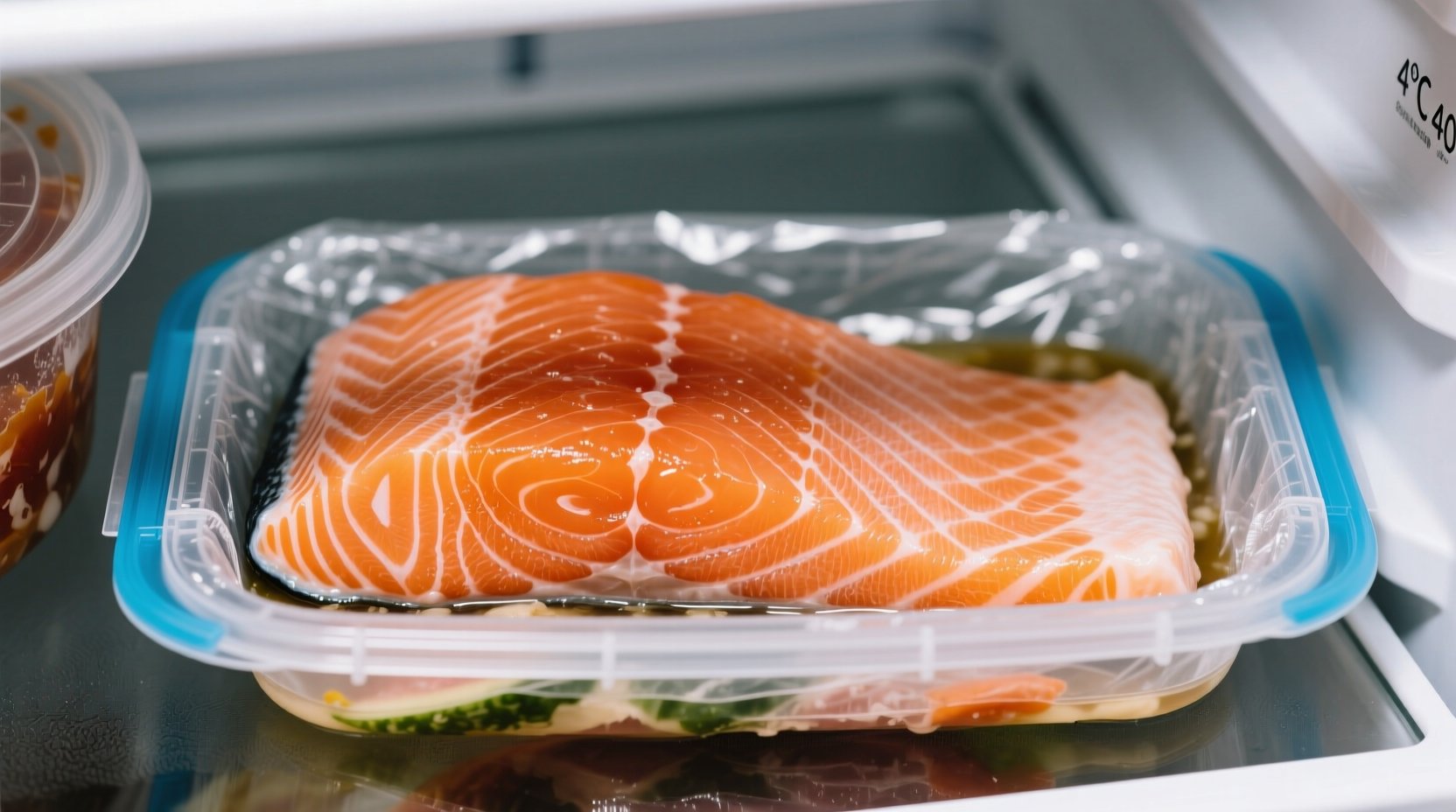Cooked salmon remains safe to eat for 3-4 days when properly stored in the refrigerator at or below 40°F (4°C). For longer preservation, freeze within 2 hours of cooking for up to 6 months while maintaining optimal quality and safety.
Wondering if that leftover salmon from last night's dinner is still safe to eat today? You're not alone—nearly 70% of home cooks struggle with determining seafood leftovers' shelf life. As someone who's worked in professional kitchens for over 15 years, I've seen too many people either waste perfectly good food or risk foodborne illness by guessing at storage timelines. Let's cut through the confusion with science-backed guidelines you can trust.
What Happens Immediately After Cooking
The clock starts ticking the moment your salmon comes off the heat. Bacteria multiply fastest between 40°F and 140°F—the "danger zone" where pathogens like Salmonella and Listeria thrive. To maximize safety:
- Cool cooked salmon within 2 hours (1 hour if room temperature exceeds 90°F)
- Divide large portions into shallow containers for faster cooling
- Never leave cooked salmon at room temperature overnight
Proper initial cooling prevents bacterial growth that could lead to food poisoning. The USDA Food Safety and Inspection Service emphasizes that rapid cooling is the most critical step in preventing spoilage.
Refrigeration Guidelines: Maximizing Freshness
When stored correctly in airtight containers, cooked salmon maintains both safety and quality for specific timeframes:
| Storage Method | Maximum Safety Period | Quality Considerations |
|---|---|---|
| Refrigerator (40°F or below) | 3-4 days | Texture begins deteriorating after day 2 |
| Freezer (0°F or below) | Up to 6 months | Best quality within 2-3 months |
| Room temperature | 2 hours maximum | Discard if left out longer |
Notice how safety and quality timelines differ? While refrigerated salmon remains safe for 3-4 days, its texture and flavor peak within the first 48 hours. The FDA Food Code specifies that cooked fish should be consumed within 3 days for optimal safety, though proper storage can extend this to 4 days.
Freezing for Long-Term Storage
Freezing stops bacterial growth completely, making it the best option for extended storage. For best results:
- Wrap salmon tightly in moisture-proof material before placing in freezer bags
- Remove as much air as possible to prevent freezer burn
- Label packages with cooking date for easy tracking
- Thaw overnight in the refrigerator—not at room temperature
Research from the National Center for Home Food Preservation shows that properly frozen salmon maintains nutritional value and safety for up to 6 months. Beyond this timeframe, while still safe if continuously frozen, quality deteriorates significantly.

Spotting Spoilage: When to Toss It
Don't rely solely on timeframes—always check for these spoilage indicators before consuming:
- Smell test: Fresh cooked salmon has a mild ocean scent; spoiled salmon develops a strong, sour, or ammonia-like odor
- Texture changes: Slimy or sticky surface indicates bacterial growth
- Color shifts: Grayish tint or dull appearance instead of vibrant pink-orange
- Mold presence: Any visible mold means immediate discard
According to FoodSafety.gov, if you detect even one of these signs, discard the salmon immediately. When in doubt, throw it out—food poisoning isn't worth the risk.
Safe Reheating Practices
Proper reheating kills surface bacteria that may have developed during storage:
- Reheat to an internal temperature of 165°F (74°C) measured with a food thermometer
- Microwave: Cover with damp paper towel to prevent drying
- Oven: Reheat at 275°F until warmed through (about 15 minutes)
- Never reheat salmon multiple times
The USDA emphasizes that reheating to proper temperatures destroys harmful bacteria that may have developed during refrigeration. Remember that reheating cannot reverse spoilage—don't attempt to "save" salmon showing signs of going bad.
Special Considerations for Different Cooking Methods
Cooking technique affects storage longevity. Here's how different preparations impact shelf life:
- Plain grilled/baked salmon: Lasts full 3-4 days refrigerated
- Marinated salmon: Acidic ingredients (lemon, vinegar) may shorten shelf life to 2-3 days
- Cream-based sauces: Reduce safe storage to 2 days due to dairy components
- Salmon salads: Consume within 24-48 hours due to mayonnaise content
These context boundaries matter because additional ingredients introduce different spoilage factors. The Food Research Institute at the University of Wisconsin notes that mixed dishes with multiple components often have shorter shelf lives than single-ingredient foods.
Practical Storage Timeline
Follow this evidence-based timeline for optimal safety and quality:
- 0-2 hours post-cooking: Cool properly before refrigerating
- Day 1: Peak flavor and texture; ideal for meal prepping
- Day 2: Still excellent quality; slight texture changes may begin
- Day 3: Final day for optimal safety; check carefully for spoilage
- Day 4: Absolute maximum for refrigerated storage
- Day 5+: Discard regardless of appearance
This timeline aligns with recommendations from both the USDA and the European Food Safety Authority, which agree that cooked fish should not exceed 4 days under refrigeration.
Common Questions About Cooked Salmon Storage
Here are answers to frequently asked questions based on current food safety guidelines:











 浙公网安备
33010002000092号
浙公网安备
33010002000092号 浙B2-20120091-4
浙B2-20120091-4